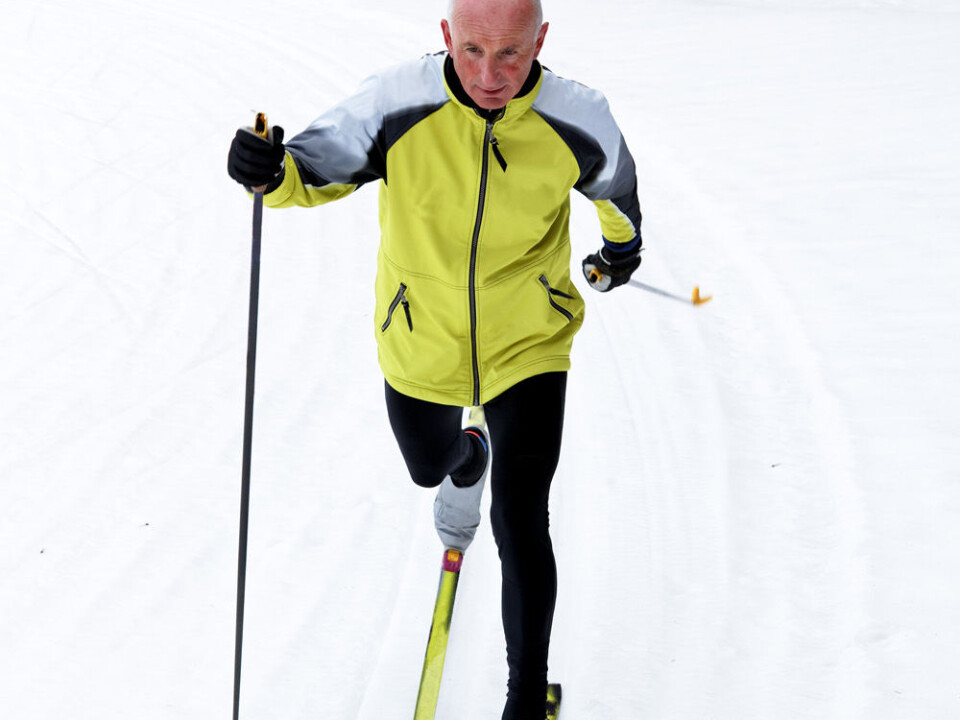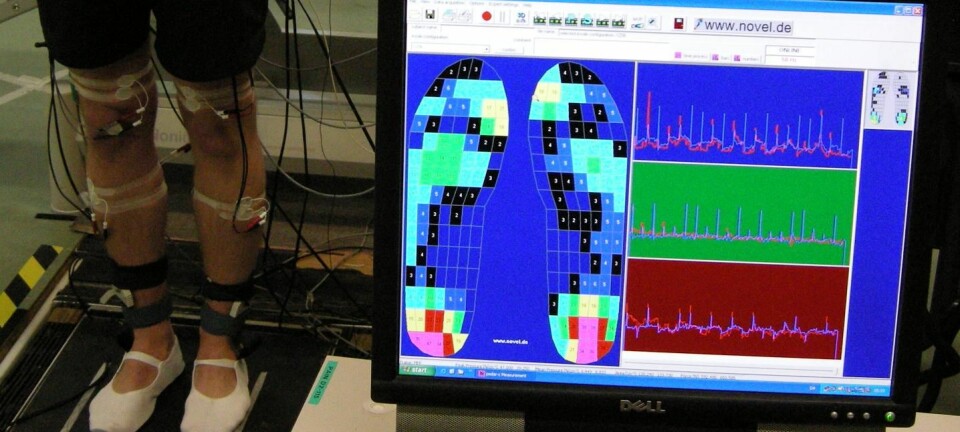This article was produced and financed by The Research Council of Norway

Less pain for the physically active
Physically active individuals suffer less from chronic pain and enjoy better mental health. Cancer patients, too, benefit from exercise. Everyone can profit from getting up off the sofa.
Denne artikkelen er over ti år gammel og kan inneholde utdatert informasjon.
A study carried out at the Norwegian University of Science and Technology (NTNU) shows that physically active individuals experience less chronic pain than those who are inactive. The results also reveal a correlation between occurrence of pain and the frequency, amount and intensity of exercise.
Simple activities
“We’re not at all talking about marathons or other extreme forms of exercise. All physical activity helps, like carrying bags back from shopping or walking to and from work,” says Stein Kaasa, professor at the Institute of Cancer Research and Molecular Medicine, Faculty of Medicine, NTNU.
Dr Kaasa has headed a research project examining the effect of physical activity on chronic pain, mental health and cancer. The project received funding under the Research Programme on Public Health (FOLKEHELSE) at the Research Council of Norway.
Three out of ten have chronic pain
Three out of ten respondents in the study reported having moderate to severe pain consistently for over a year.

The study shows that physically active individuals experience less pain over time. The occurrence of chronic pain among individuals who exercise moderately for at least 30 minutes one to three times a week was close to ten per cent lower than for those who do not exercise at all.
The difference was even greater among older women. Depending on the intensity of exercise, the rate of pain in this group was 20 to 40 per cent less in active individuals.
The project has drawn in part on data collected from the comprehensive longitudinal population health study carried out in Norway (the Nord-Trøndelag health study (HUNT)). The data covers chronic pain in relation to physical and mental health among the general population over a 5-year period. Participants in the study were 20 years of age or older.
Exercise each day keeps the doctor away
The researchers discovered that individuals who went from no exercise to moderate exercise reported a decrease in pain.
“Even so, we need to be careful about drawing the conclusion that high pain levels will diminish just through greater exercise,” Professor Kaasa points out.
“In order to be certain, we need to carry out an intervention study in which we offer generally inactive people with pain a programme to help them become more active. This will establish a basis for determining the effect of training,” he explains.
Better mental health
According to the project physically active individuals also benefit from better mental health. The differences are greatest between those who do not exercise at all and those who exercise some, and is less pronounced between people who are somewhat active compared to those who exercise a lot. Once again, the difference was greatest for women over 65.
“Physical activity is not only useful in preventing pain; it also contributes to improving well-being in general,” the professor maintains.
Beneficial for cancer patients
In a separate study, researchers examined the effect of training on cancer patients. Patients underwent a rehabilitation programme including one hour of physical activity twice daily. Activities ranged from Nordic walking and aerobics to training in a pool or with weights.
Researchers found that the patients’ quality of life and their level of activity increased substantially. The fact that cancer patients can actually exercise and benefit from it is an important insight, Dr Kaasa believes. These patients are often concerned about how active they can and should be.
“The results document that not only is it possible for most cancer patients to engage in exercise, but that they also gain physical strength from it. In turn, they are likely to tolerate cancer treatments better and to remain more active on a daily basis,” the professor points out.
Translated by: Glenn Wells/Carol B. Eckmann

































